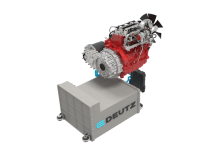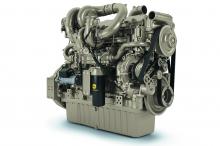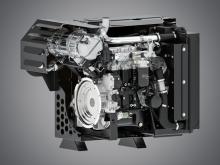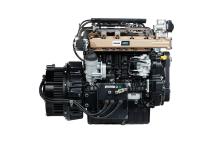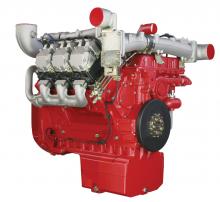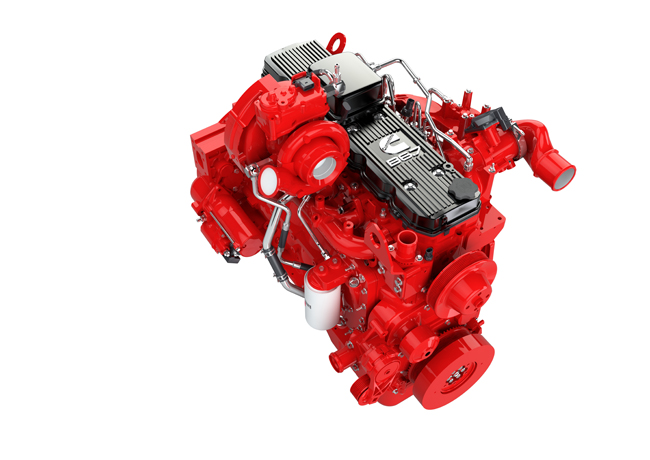
Advances in emissions reduction technology as well as alternative fuels, hybrid systems and all-electric drives mean that future construction machines will be cleaner and more efficient than ever before.
A wide array of innovative power solutions is now coming to market or under development. All the major engine manufacturers are introducing new low emission models as well as working on alternative power solutions.
Additionally, the aftertreatment package is 65% smaller and 63% lighter than its predecessors. Caterpillar has also reduced the number of interface connections between the engine and aftertreatment package by around 50%.
Of note for the B6.7 unit is that it offers an increase in torque of 30%, while maximum power is now 243kW. As a result of the performance increase, some users have been able to replace 9litre engines for some installations with the more compact 6.7litre unit. This boost in torque has come about following the removal of the EGR unit fitted to minimise emissions on previous generation engines for this capacity class from the firm.
Meanwhile, the QSK60 represents a major step forward for Cummins also. This is the first engine in the higher power range designed to meet the latest emission standards, as this category was previously exempt.
Also new from Cummins is the Stage V F3.8 power unit. This is delivered as a complete and ready-made power package that comprises an engine, single module aftertreatment, radiator and cooling system.
The firm says it is well on track with the Stage V development programme and has 200 installations featuring this technology. Cummins now offers diesels that meet the Stage V requirements with power outputs from 75–503kW.
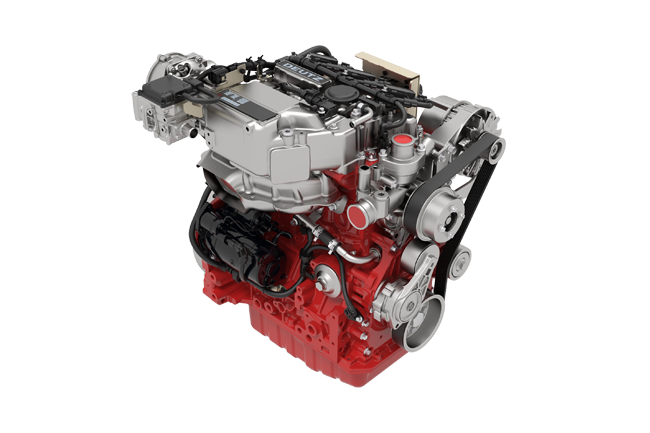
Deutz is moving rapidly towards a portfolio of fuels for its range of powerplants. The firm says that all of its diesels are already certified for bio-diesel fuel and that it is looking at a range of fuel and power options. These include multifuels, hydrogen and synthetic fuels as potential energy sources in coming years. Deutz now incorporates electric drive specialist Torqeedo, which it acquired in 2017, a move that the company acknowledges allowed Deutz to jump five years forward in its own electrification plans. The firm sees potential for hydrogen as a fuel in internal combustion engines and is working with a start-up company in Munich to advance its efforts in this area.
According to Deutz, there will be no single power solution for the future to address all applications and requirements. Instead, there will be a mix of different technologies and modular systems will be important.
One of the latest power units from Deutz is its TCD 2.2, a three-cylinder development of its proven TCD 2.9. The TCD offers power outputs of 22-56kW. Both engines are being made available as liquefied petroleum gas (LPG) versions, the G2.2 and G 2.9. The firm says that the electronically-controlled LPG system features a three-way catalytic converter and has extremely low emission levels, which comply with Europe’s Stage V standards.
The firm is also working on its TCD 5.2, an in-line diesel without exhaust gas recirculation and with a high-efficiency selective catalytic reduction system to meet Stage V constraints. It will also be produced for Stage IV nations such as China and other regulated markets. The TCD 5.2 will provide up to 170kW.
FPT Industrial says that its new Cursor X engine is highly versatile and can be adapted to run on natural gas. However, the power units can also be used as part of a hybrid installation. Developed in partnership with the CNH Design Centre, the Cursor X unit features a modular architecture that is intended to allow easy assembly, vehicle integration, servicing and full scalability. It has been designed to have self-learning capability and to provide a significant amount of information for further hardware and software design developments. It can be equipped with processors and sensors that recognise anomalies, analyse wear and tear and predict maintenance needs. The natural gas configuration, with an electric mode option, is suited urban use and can help to lower CO2 emissions by up to 30%.
The firm is expanding its range of power options with two new driveline developments, the E-Axle and the Transfer Box. The E-Axle is a compact solution that transfers power and torque to the wheels through the gear unit. This modular concept that can be adapted to various vehicle layouts and weights and can deliver power of up to 250kW and 98% efficiency in main working conditions and supports three vehicle layouts - front, rear and all-wheel drive. The Transfer Box solution adds an electric power unit to the original engine, enabling the management of all propulsion modes. The Transfer Box is designed for vehicles being used in different applications, such as mixed usage construction equipment, in urban and extra-urban building sites.
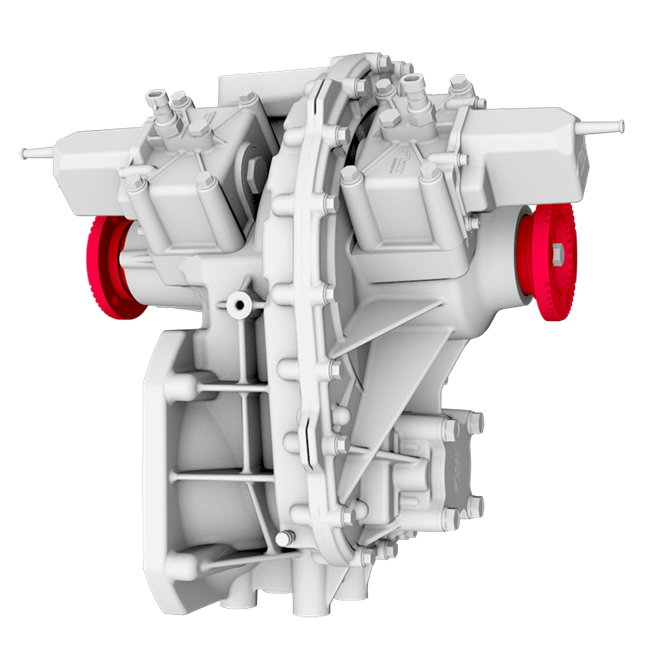
The company is also offering the option of a mild hybrid powertrain architecture. The package has two main extra components, the E-Flywheel and the E-Turbocharger, which recover energy that can be reused.
German firm
Electronic control systems are commonly used for multi-cylinder powerplants. However, they cannot easily be used on single-cylinder units that are deployed for tasks such as compaction equipment. Previously, mechanical controls for single-cylinder units had to be set to handle a particular speed set. If another speed set was required for another application, effectively a customer had to buy another engine. However, electronic control gives a manufacturer the ability to set the speed by using CANbus technology.
Other capabilities conferred by using an electronic control unit include the ability to avoid damage to the starter motor in the event that the ignition key is turned to start the engine when the motor is already running. Another benefit is theft protection. The electronic system can prevent the engine from being started if it moves outside a defined geographical area.
Frome
Key features are said to include increased uptime and low operating costs. The firm’s new Stage V aftertreatment technologies are said to be optimised for flexible integration and several offer reduced packaging and weight from previous Stage IV solutions.
The K-HEM 2504 is a hybrid unit generating a combination of electrical and mechanical power consisting of a KDI 2504TCR 55.4 kW diesel engine that complies with Stage V legislation and a 48-Volt electric motor that guarantees 19.5kW peak power and 9kW continued power.
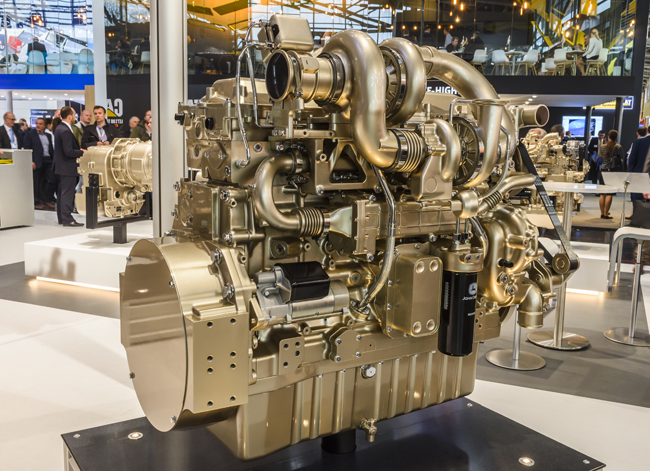
K-HEM powerplants offer further benefits. They allow excavators to have faster and more precise movements than previously, with improved efficiency and productivity.
The company says the line-up demonstrates its belief that there is no one single fuel type for the future of the off-highway equipment industry. Its long-term global business strategy has been to provide the markets with an engine platform for every fuel type and application: diesel, gasoline, liquid gas, and natural gas – with the further option of duel fuel.
Rolls-Royce is developing a new range of its EU Stage V certified MTU engines. The Series 1000, 1100, 1300 and 1500 engines cover a power range of 115-480kW. The new limits are achieved by internal engine enhancements and by adding an SCR system and an additional diesel particulate filter. As well as reduced CO2 emissions, the torque, performance and fuel consumption of the engines have all been improved.
Additionally, MTU Series 2000 engines (567-970 kW) for construction equipment, industrial and mining applications will be available with EU Stage V certification from the end of 2022.
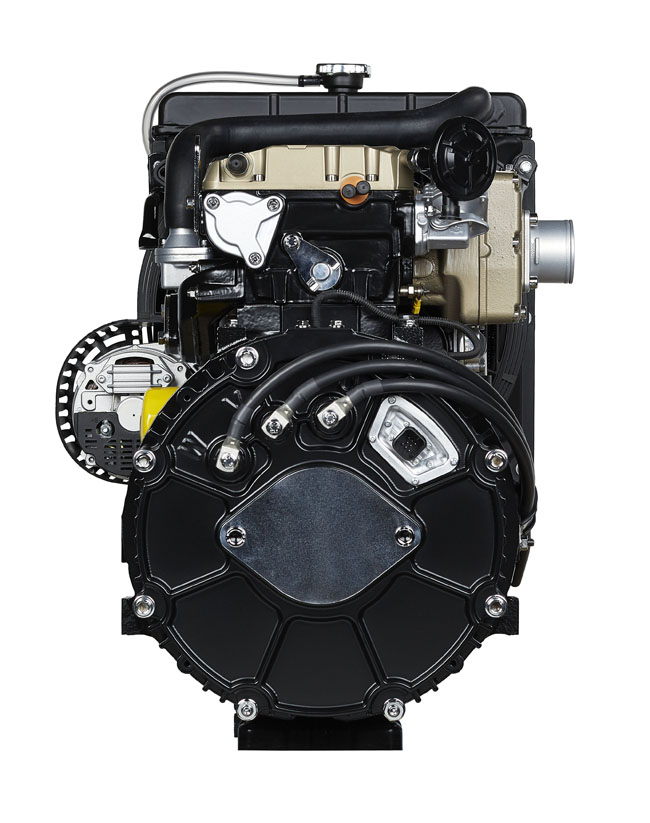
Volvo Penta’s Stage V emissions-compliant engines are said to have proven promising in field tests, boasting fuel consumption reductions of up to 5%, compared to their Stage IV predecessors. This not only reduces CO2 output but also the total cost of ownership. With a power range from 105 to 585kW,
The Volvo Penta Stage V range is said to provide improved productivity due to an integrated engine and exhaust aftertreatment system. Passive regeneration occurs during normal operation, removing the need for stand-still regeneration. Uptime has also been boosted by improved oil change service intervals, which have been doubled from 500 to 1,000 hours.
The aftertreatment system utilises Yanmar’s proprietary DPF regeneration technology which is fitted to the common rail TNV series. The company has developed a mixer-less SCR solution which it says allows more freedom in the designing of the exhaust tail pipe on the vehicle.
The standard aftertreatment units are a compact design to match the width of the engine, allowing Yanmar to offer a range of optimum layout options for different construction equipment and material handling applications. The configuration of the device is expected to simplify design requirements for the engine's installation to equipment while improving external accessibility.

